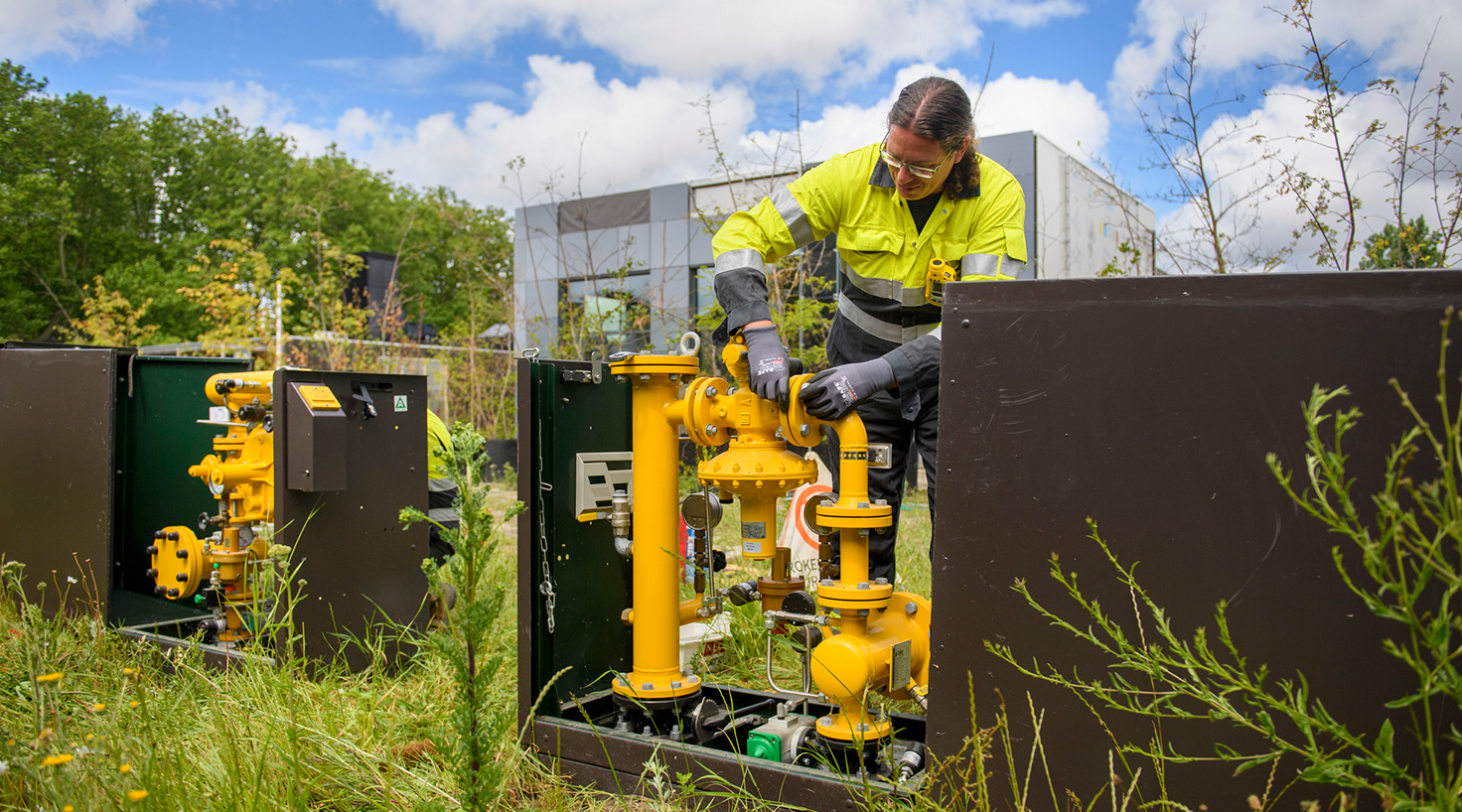Progress of the energy transition
The Netherlands is in the midst of a transition from a fossil energy system (centralised large-scale energy generation from coal, oil and natural gas) to a decentralised system generating clean, sustainable energy. The climate ambition of a 55% CO2 reduction by 2030 and the associated transition places new demands on our energy system and requires a different role from us as a grid manager.
Progress of the energy transition visualised
The infographic ‘Progress of energy transition in Stedin area through to 2030’ on the next page visualises the energy transition task in our service area and shows where we are in terms of achieving the ambitious targets. It shows how much renewable energy we expect to connect to our electricity grid, what developments relating to more sustainable living, working and transport are having an impact on customer demand and therefore on our investments in the period up to 2030, and how much of this we have realised since 2022. In 2023, we calculated the effect of the adjusted climate ambitions (a 55% CO2 reduction) on Stedin’s investment task. This task has significantly increased compared to previous calculations. We have incorporated the changes to our task in the ‘Investments’ column in the infographic.

Renewable energy
The expected task and the impact of the energy transition on Stedin are constantly evolving. Accordingly, we constantly improve and update the infographic. We see a system emerging in which different energy carriers are together creating a sustainable energy landscape. In addition to wind-powered and solar-powered electrification, heat, hydrogen, green gas and batteries each make their own contribution to the sustainable energy system. The infographic therefore includes the latter four as well. We will supplement the infographic in the future with our expectations about the size and realisation of these and possibly other new energy carriers.
Heat, hydrogen and green gas
We are increasingly moving away from use of natural gas for heating existing homes. In many cases, the installation of (all-electric or hybrid) heat pumps is a good alternative for heating homes. However, to reduce demand for capacity on the electricity grid, we are increasingly also considering other sustainable alternatives, such as green gas and hydrogen. At present, hydrogen is used primarily as a raw material in the industrial sector.
Based on various factors, including the recommendations in the Integrated Infrastructure Survey 2030-2050 (II 3050), it is expected that hydrogen may in also play a role as an energy carrier in the future, for example in the built environment. Several analyses, including the Opening Bid from Stedin and the Initial Analysis by the Netherlands Environmental Assessment Agency (PBL), show that in some neighbourhoods, heating with a sustainable gas is the cheapest alternative to natural gas. Therefore, we will need to ensure that our gas grid remains in a good state. We will do this by making sufficient investments in maintenance and replacement and by working on digitalising the gas grid.
We are also making preparations for the growth and greater sustainability of collective heating systems, in response to the bill for the Collective Heat Supply Act (Wet collectieve warmte, Wcw).
Living, working and transport
The enhanced climate targets and the resulting rise in customer demand expected in the areas of living, working and transport were factored into our investment plans in 2023. The impact of this on our workload is shown in the ‘Stedin Investments’ column in the infographic on the previous page. You can read more about these investments in the next subsection.
Investments
We need to build much more, and much faster. However, the pace of construction projects is not fast enough at present. Stedin has therefore developed a strategy that focuses entirely on faster construction, better utilisation and proper management of our grids. 2023 was the first year in which we applied this new strategy. The results achieved so far relative to our targets are described in the ‘Full focus on further acceleration’ section.

